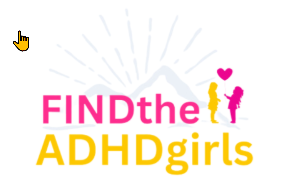What Are the Signs of ADHD in YOUNG Girls?
What Are the Signs of ADHD in Young Girls?
Understanding and identifying inattentive ADHD in girls to ensure early diagnosis and support
Understanding ADHD in Young Girls
Attention-Deficit/Hyperactivity Disorder (ADHD) is often misunderstood and underdiagnosed in girls. While many people associate ADHD with hyperactivity and disruptive behavior, many girls experience a different presentation called inattentive ADHD. These girls may appear quiet, daydreamy, and well-behaved, making their ADHD symptoms easy to overlook.
The consequences of undiagnosed ADHD in girls can be severe and long-lasting. Girls who struggle silently often develop low self-esteem, anxiety, depression, and other mental health challenges. Early identification and diagnosis are crucial for providing appropriate support and preventing these negative outcomes.
Key Fact: ADHD is a neurodevelopmental disorder that affects at least 5% of the population. Girls are significantly underdiagnosed compared to boys, often because their symptoms present differently and are more easily masked.
Common Signs of ADHD in Young Girls
Girls with inattentive ADHD may not show the hyperactive behaviors typically associated with ADHD. Instead, they may display subtle signs that are often mistaken for laziness, lack of intelligence, or personality traits. Here are the key signs to watch for:
Attention & Focus Issues
- Difficulty maintaining attention
- Poor listening skills
- Easily distracted
- Hyperfocus on preferred activities
- Appears not to listen when spoken to
Organization & Planning
- Chronic disorganization
- Forgetfulness
- Difficulty with multi-step tasks
- Loses important items
- Struggles with time management
Academic Challenges
- Inconsistent academic performance
- Poor grades despite intelligence
- Struggles staying on task
- Forgets to turn in homework
- Difficulty with planning and organization
Emotional Regulation
- Big emotions and mood swings
- Difficulty verbalizing feelings
- Overreaction to minor setbacks
- High rejection sensitivity
- Internalized feelings of failure
Social Difficulties
- Feels out of place socially
- Hard time making friends
- At risk for bullying
- Social rejection and isolation
- Masking behaviors to fit in
Other Concerns
- Heightened sensory sensitivity
- Anxiety and depression
- Poor self-esteem
- Daydreaming and appearing “off”
- Not living up to potential
Important Distinction: It can be difficult to distinguish between ADHD and normal childhood behavior. However, children with ADHD do not simply grow out of these behaviors. The symptoms are persistent, can be severe, and cause difficulty at school, home, or with friends. If your daughter shows several signs and symptoms that are present across multiple situations, it’s time to screen her for ADHD.
Meet Cynthia Hammer, MSW
Executive Director of the Inattentive ADHD Coalition
Cynthia Hammer, MSW, is a passionate advocate for early ADHD diagnosis in girls. With a personal diagnosis of inattentive ADHD at age 49, Cynthia brings both professional expertise and lived experience to her work. She is the founder and Executive Director of the Inattentive ADHD Coalition and the creator of FINDtheADHDgirls.org, a groundbreaking initiative dedicated to screening and supporting young girls with ADHD.
Her Mission
Cynthia’s work is driven by a powerful mission: to ensure that all girls with ADHD are identified and diagnosed by age 8, before the long-term damage to self-esteem and mental health occurs. She previously founded the non-profit ADD Resources, demonstrating her long-standing commitment to ADHD awareness and support.
Why Her Work Matters
- Early Identification: Cynthia advocates for screening all girls by age 8 to catch ADHD before it causes lasting psychological damage.
- Preventing Self-Esteem Damage: Undiagnosed ADHD leads to years of self-blame and shame. Early diagnosis changes the narrative from “What’s wrong with me?” to “I have ADHD, and I can get support.”
- Addressing Underdiagnosis: Girls with inattentive ADHD are massively underdiagnosed because their symptoms are different from the stereotypical hyperactive presentation.
- Lived Experience: As someone diagnosed with ADHD herself, Cynthia understands the struggles firsthand and brings authentic compassion to her advocacy work.
Resources & Support
If you suspect your daughter may have ADHD, there are several excellent resources available to help you take the next steps.
FINDtheADHDgirls.org Resources
- Free ADHD Screening Checklist: Complete a comprehensive free ADHD checklist designed specifically for girls. This tool helps identify potential signs of ADHD without leaving your home.
- Blog & Articles: Read in-depth articles about ADHD in girls, from identification and diagnosis to communication tips and support strategies.
- Resource Library: Access handouts, videos, comics, and books about ADHD in girls. Many resources are free to download and share.
- Free ADHD Audiobook: Subscribe to the FINDtheADHDgirls newsletter and get instant access to a free ADHD audiobook and the full resource library.
- Repository: Explore professionally written and designed content about ADHD in young girls. All materials are free to download and share with others.
- Newsletter: Receive monthly insights on ADHD in young girls and updates on the organization’s work.
Inattentive ADHD Coalition Resources
- ADHD Information & Education: Learn about what ADHD is, the different presentations, and how it impacts children and adults. Includes information specific to girls and women.
- Workplace Accommodation Guide: Free resource highlighting practical accommodations that support focus, organization, and success in the workplace for adults with ADHD.
- Personal Stories: Read powerful personal accounts from men and women diagnosed with ADHD in adulthood, and from parents navigating their child’s ADHD journey.
- Volunteer Opportunities: If the mission of the Inattentive ADHD Coalition resonates with you, consider becoming a volunteer and helping to make a difference.
Next Steps
 If you recognize signs of ADHD in your daughter, consider taking these steps:
If you recognize signs of ADHD in your daughter, consider taking these steps:
1.Complete a screening checklist at FINDtheADHDgirls.org to assess potential symptoms.
2.Talk to your pediatrician or a mental health professional about your concerns and request a formal evaluation.
3.Gather information about ADHD in girls to better understand the condition and how to support your daughter.
4.Connect with support communities to learn from other parents and individuals with ADHD.
5.Seek a proper diagnosis from a qualified professional before age 8 when possible, to enable early intervention.
This document is for informational purposes only and should not replace professional medical advice. Always consult with a qualified healthcare provider for diagnosis and treatment.
Listen on Podcast
Did you like your experience?
Please leave us a Testimonial HERE if you have a Google account.
Your word helps get our word out to more people.
Thank you in advance!!


